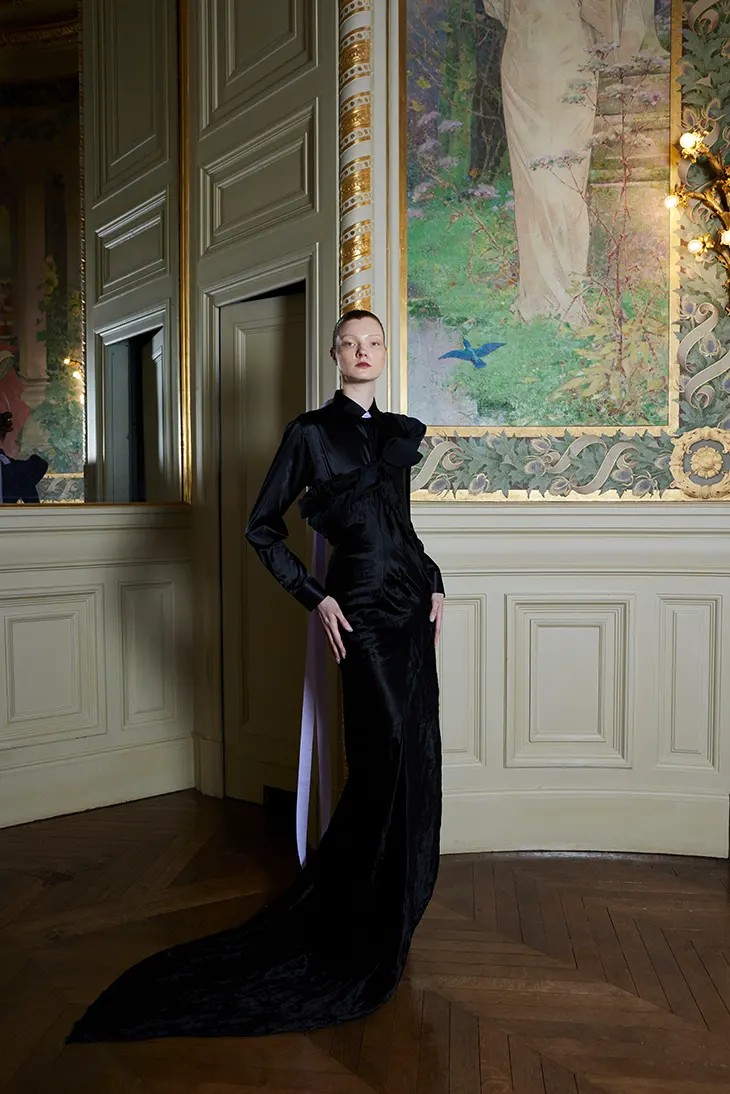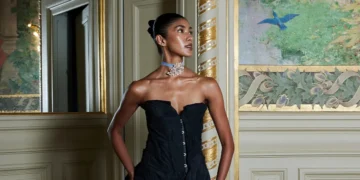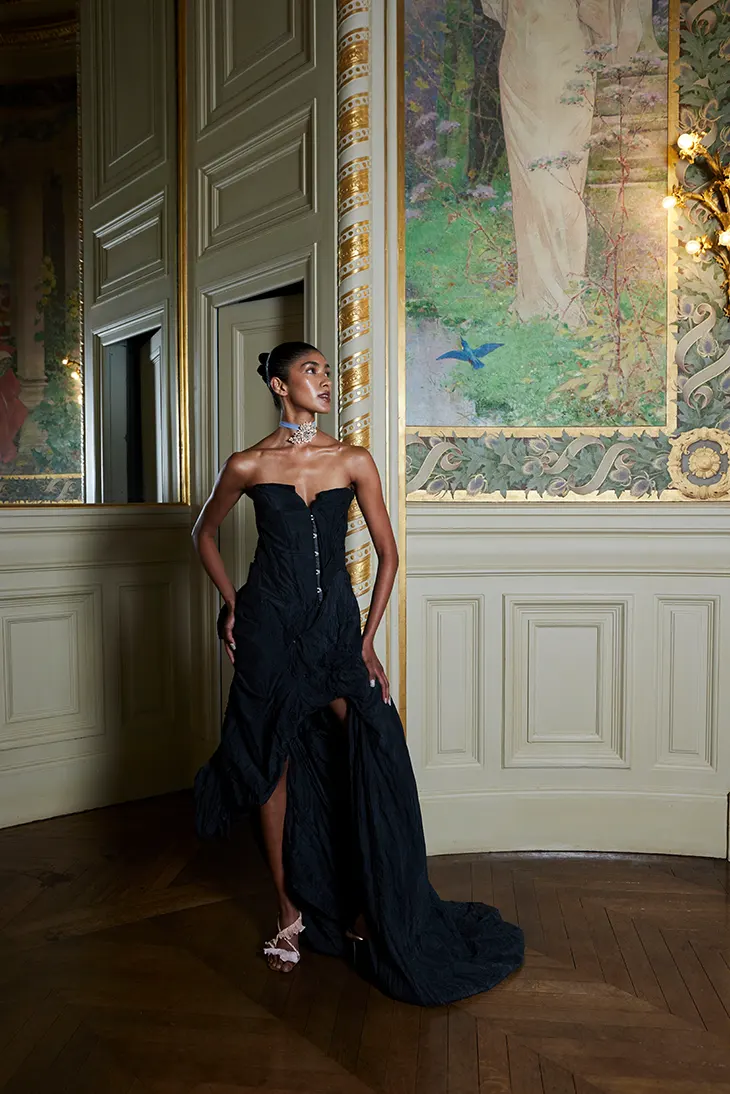
Peet Dullaert introduced his FW25 Haute Couture collection in Paris under the name Silent Symphony. The show opened with Anastasia Ivanova and closed with Gia Bab, each model carrying the designer’s vision through movement. Instead of rushing toward spectacle, Dullaert centered stillness, control, and what he called “the beauty of being.”
The designer worked from the belief that not everything demands explanation. Some things live in silence. Some pieces belong to those in motion who seek comfort in subtle elegance. Dullaert positioned the collection as an offering to the body, to time, and to care. His statement made clear he wasn’t chasing novelty, he designed for a lived experience, for the “space in between.”
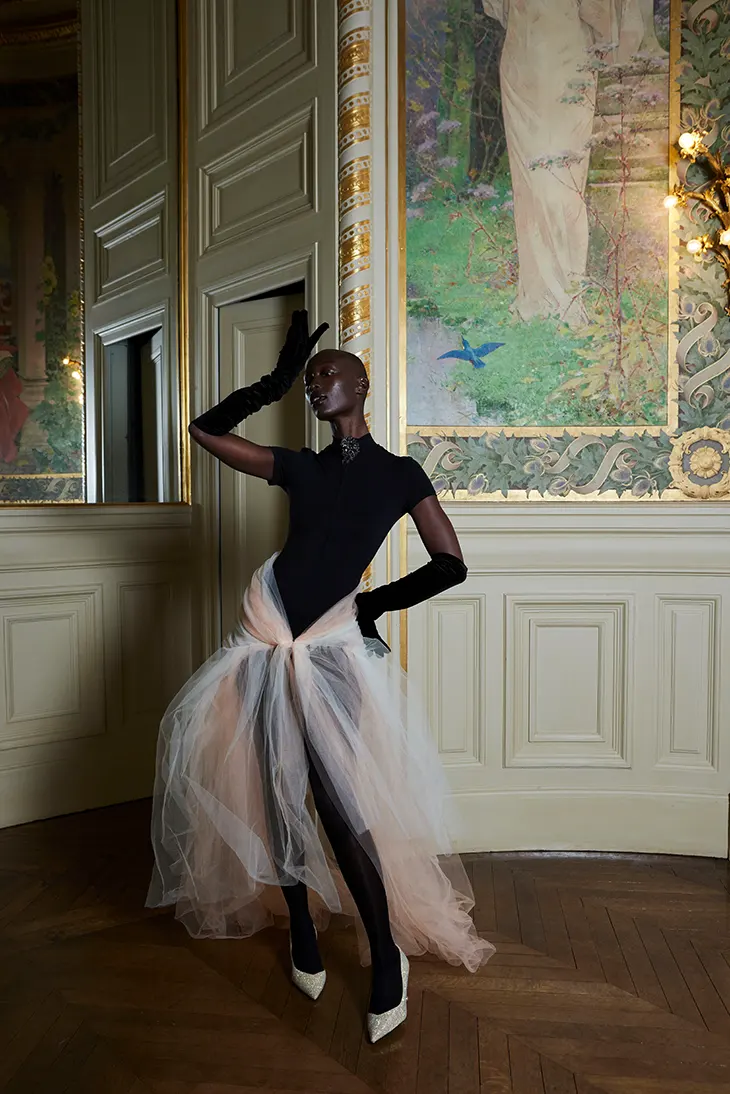
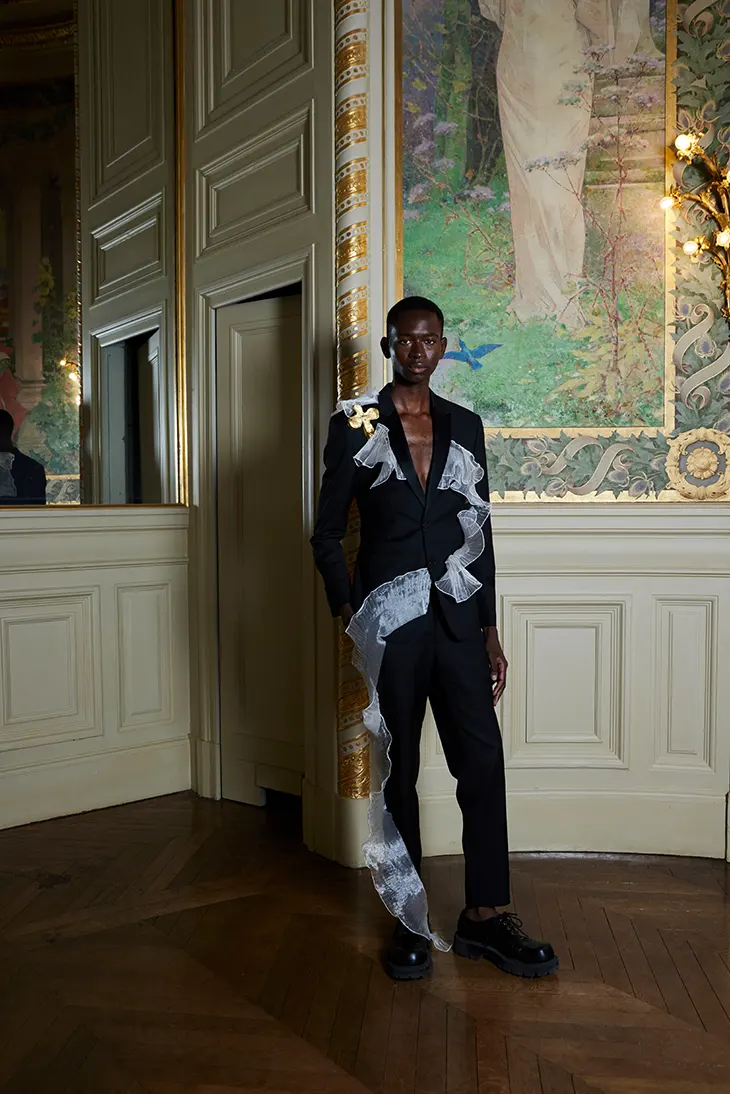
Dullaert continued to explore the construction method he calls cousu main, needle and thread, guided by the hand. He rejected the use of sewing machines in favor of shaping each silhouette manually. The technique supports a close relationship between fabric and body, allowing the garments to move without restriction. Creations emphasized vulnerable points: visible scapulae, collarbones, the curve of the neck, and the shape of the shoulders. These areas framed the body without overpowering it.
The designer selected cool wools, plissé, tulle, and voile to build a structure that follows the body’s natural movement. Though structured, these fabrics remained light. Silk crêpe georgette appeared layered in such a way that the pieces breathed. Each material responded to motion, never fixed in place. The shapes maintained elegance without freezing the figure.
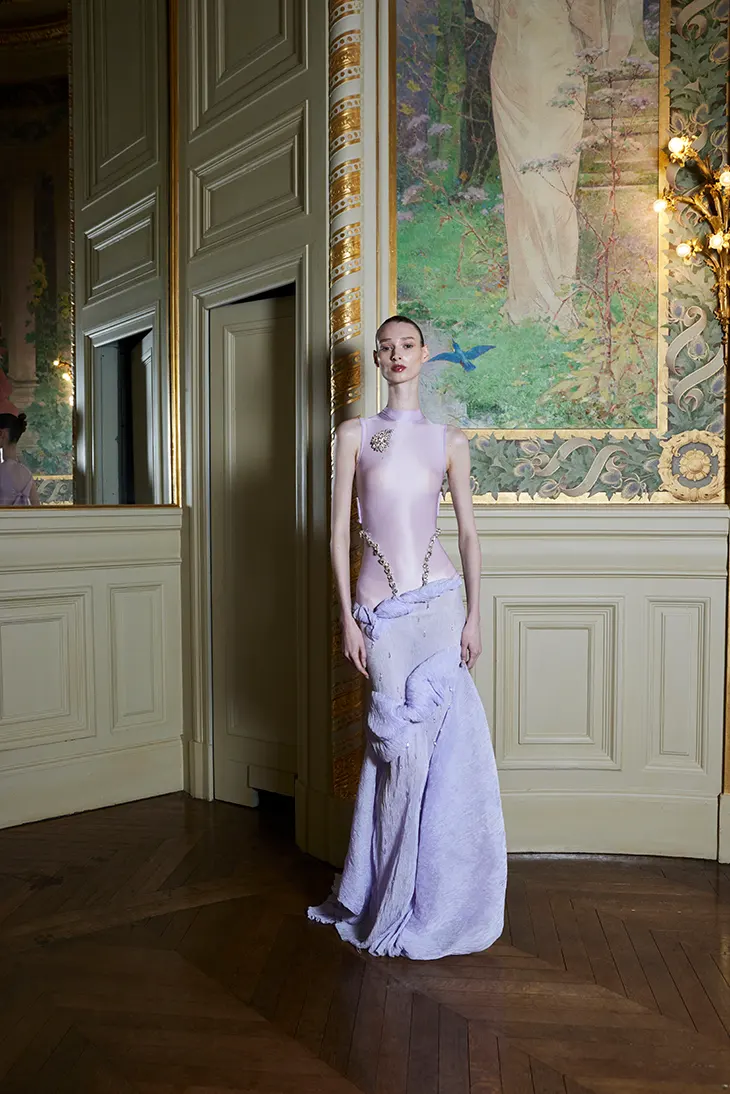
Suiting took a different direction. Dullaert applied a turned cut that accounts for how people live today. His suits allow for typing on a phone or raising arms with ease, adjustments made possible through the bias cut running along the back and arms. The traditional grid of seamwork fell away in favor of a fluid structure, tailored with full function in mind.
Flou-tailoring grounded the construction of each piece. This technique required shaping fabric directly on a live body, instead of on mannequins. Through this method, Dullaert created pieces that never felt removed from real life. He emphasized that each design stemmed from physical presence and human connection, not from imposed abstraction.
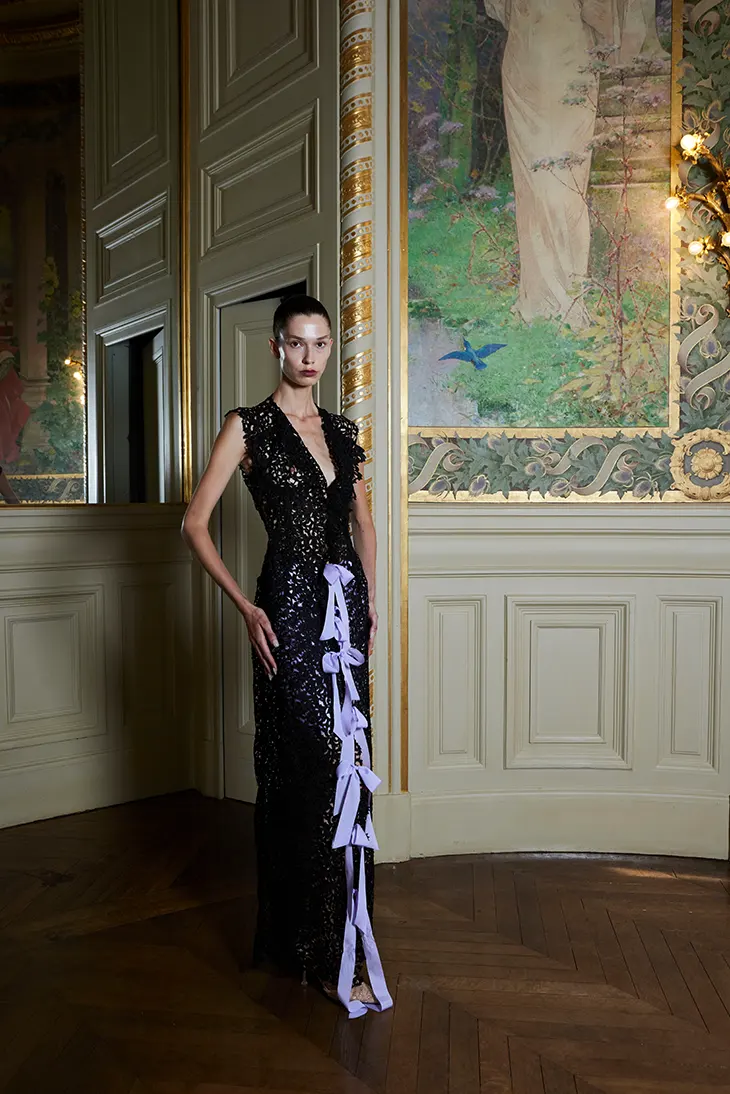
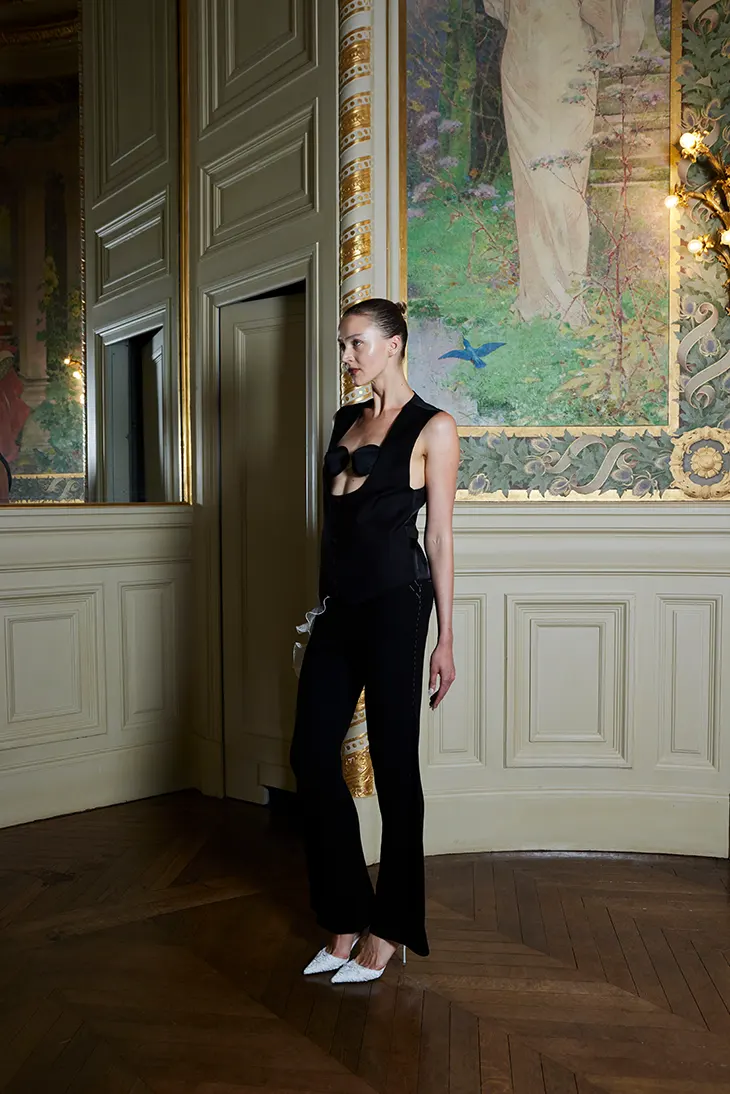
The collection also introduced the house’s techno pleating. This material innovation relies on pleats shaped either by hand or with machinery, always executed by a single artisan. The fabric adapts to the wearer’s movement and maintains its shape through travel. It resists creasing and fits easily into luggage without compromising design. Though couture, these garments answer practical concerns: portability, ease of wear, and comfort.
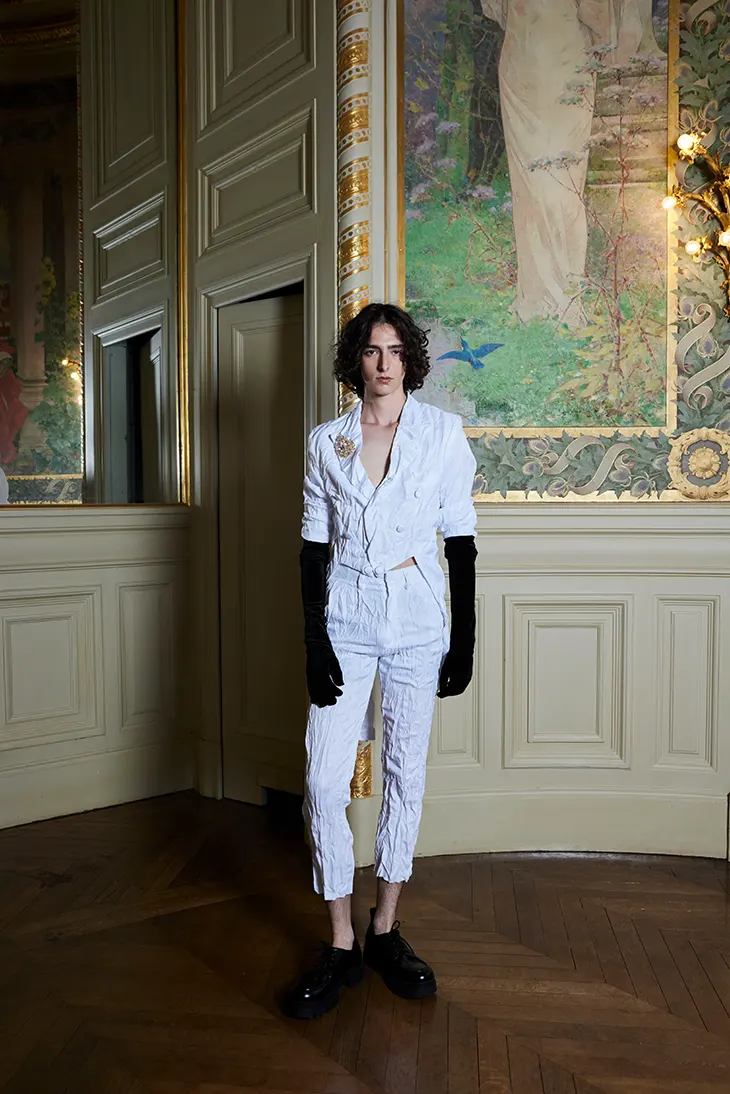
Dullaert closed his presentation with a manifesto. He questioned beauty as a fixed idea and refused to define it through surface alone. He focused on the structure of each garment and how it interacts with posture and movement. The pieces, he stated, reflect the people around him, those who inspire him through their presence, age, and individuality. The collection emerged as a tribute to these lives, stitched into every fabric choice and every cut.
Each piece came together through a made-to-order production cycle. The house manufactures both couture and ready-to-wear according to specific client demand. This process limits waste. Packaging remains fully recyclable, and shipping follows a carbon-neutral model. Dullaert continues to build couture with responsibility and human needs in mind.
